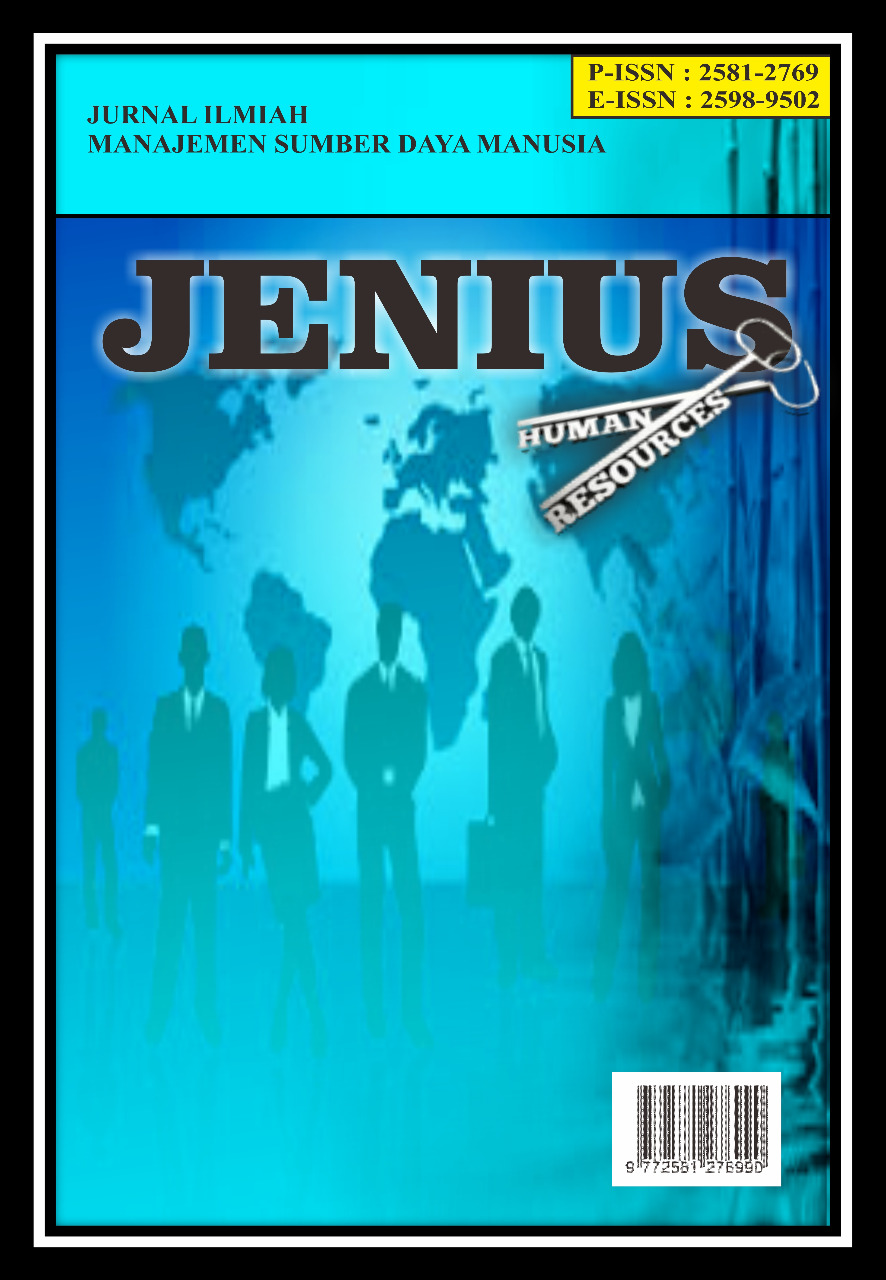Strategies to Improve Employee Engagement and HR Quality at M Educational Institution Jakarta
DOI:
https://doi.org/10.32493/JJSDM.v7i3.41683Keywords:
Educational Institutions; Employee Engagement; Human Resource Management Quality; StrategyAbstract
The development of education is no less important than the economic and social world. However, in recent years the workforce in the world of education has experienced significant turnover which has hampered the development of teaching. Therefore, it is necessary to analyze and discuss the level of employee engagement and the quality of human resource management using the example of the educational institution M Educational Institution Jakarta. This research was conducted by conducting interviews and distributing questionnaires to educational personnel as subjects. In this study, we identified the core concepts of employee engagement in educational institutions, designed an engagement questionnaire and a satisfaction questionnaire, and conducted a survey. Getting the results from this research, there are problems such as incomplete human resource development mechanism, high human resource mobility, serious exit of high-quality human resources, unbalanced faculty staffing structure, and incomplete performance evaluation and incentive mechanism. Analyzing the problems and their causes, it is necessary to propose constructive solutions and countermeasures, identify common problems in employee participation and human resource management in educational institutions, and improve strategy development and policy adjustment depending on the problems. The result of this research is that increasing employee engagement and the quality of human resources is very important. In the development of the M Educational Jakarta institution, it requires the implementation of a scientific and rational human resource management mechanism, with the concept of project management as a systematic implementation framework, which can also be a guide in managing HR in educational institutions, and ensuring the effectiveness of HR operations.
References
1. Abraham H. Maslow. (2013). Motivation and Personality (Motivation Theory with a Hierarchy of Human Needs Approach). PT. PBP, Jakarta.
2. A.A. Anwar Prabu Mangkunegara. 2016. Corporate Human Resource Management. Bandung : PT. Remaja Rosdakarya.
3. Bhattacharya, S., Momaya, K. S., & Iyer, K. C. (2020). Benchmarking Enablers to Achieve Growth Performance: A Conceptual Framework. Benchmarking, 27(4), 1475–1501.
4. Fahmi, Irham. (2013) . Strategic Management Theory and Application, Alfabeta: Bandung.
5. Galavan, R. (2014). Doing Business Strategy.Ireland: NuBooks.
6. Robertson-Smith, G., Markwick, C. (2009). Employee Engagement: A Review of Current Thinking. Brighton, UK: Institute for Employment Studies.
7. Naser S S A, Shobaki M J A, Amuna Y M A, et al.(2017) Trends of Palestinian Higher Educational Institutions in Gaza Strip as Learning Organizations[J].
8. Nie Weijin. (2019) Design of training project system based on the knowledge structure of higher vocational teachers [J]. China Vocational and Technical Education
9. Raymond Noy. Translated by Xu Fang. (2015) Employee Training and Development (6th Edition) [M]. Beijing: China Renmin University Press, p.127.
10. Sedarmayanti. (2017). Human Resource Management. Bandung: Refika Aditama.
11. Xiao Minying. (2020) Research on the training system of higher vocational teachers from the perspective of human resources management theory [J]. Journal of Hunan Posts and Telecommunications Secondary Vocational School.19(03):62-65
12. Yulius, Y. (2022). Human Resource Management (M. H. Maruapey (ed.)). KBM Indonesia Publisher. http://repository.upi-yai.ac.id/id/eprint/6976
Downloads
Published
Issue
Section
License
Copyright (c) 2024 Hecan Xi; Hariyadi B. Sukamdani, Maya Dewi Diyah Maharani

This work is licensed under a Creative Commons Attribution 4.0 International License.
Authors who publish in this journal agree to the following terms:
The author owns the copyright of the article and assigns to the journal the right of first publication with the work simultaneously licensed under the terms Atribusi 4.0 Internasional (CC BY 4.0)
 which allows others to share the work with acknowledgment of the work's authorship and initial publication in this journal.
which allows others to share the work with acknowledgment of the work's authorship and initial publication in this journal.Authors may enter into separate additional contractual arrangements for the non-exclusive distribution of the published journal version of the work (for example, posting it to an institutional repository or publishing it in a book), with acknowledgment of the work's original publication in this journal.
Authors are permitted and encouraged to post their work online (for example, in institutional repositories or on their websites) before and during the submission process, as this can lead to productive exchanges, as well as earlier and larger citations of published work (See The Effect of Open Access).






























.png)





